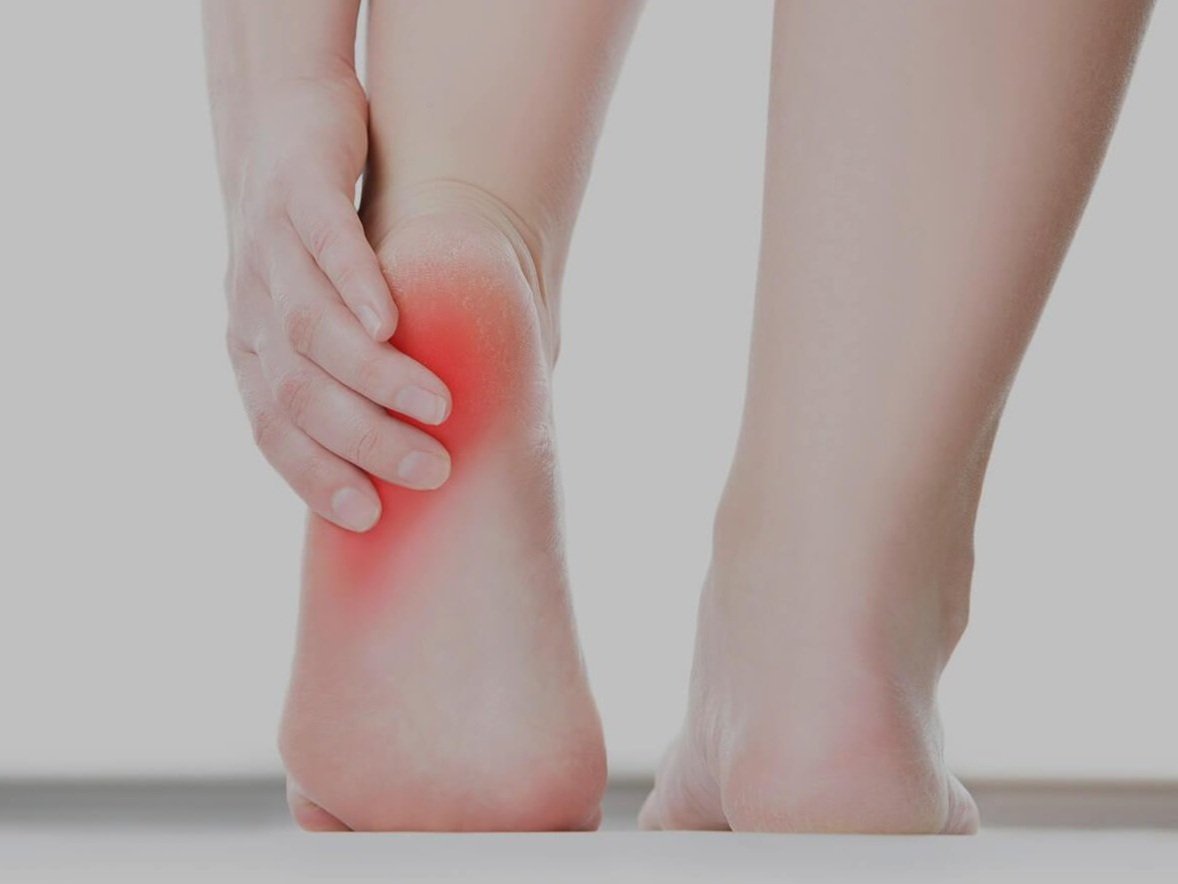Sports Injuries
& Foot Mechanics
Feet do a lot of work. They carry the entire body, create balance and movement, and provides sensory feedback to the brain to minimise risk of injury.
Injuries can occur in the feet and legs due to repetitive movements, positions or due to the person's current walking pattern.
This can be prevented through thorough screening, assessments and appropriate rehabilitation in accordance to the person's individual case.
Heel Pain
The most common cause of heel pain is called plantar fasciosis, a condition where the plantar fascia (the main tiebeam that holds up the arch in a foot) begins to degenerate at the attachment site at the heel. Symptoms typically involve a sharp pain on the inside of the heel when weight-bearing, especially following long periods of rest (sitting down/sleeping). It is commonly caused by:
High impact activities (running, jumping etc)
Flat feet or high arches
Increasing activity "too hard, too fast"
Stiff big toe joint
Being overweight
Tight calf muscles
As the causes of plantar fasciosis can significantly vary from person to person, its management is dependent on a person's individual case. Determining the initial and ongoing causes for the pain and targeting treatment to those areas is the key to its long-term resolution and management.
Ankle Sprains
Rolling of the ankle is a very common injury found in many pivot type sports (e.g. Basketball, Netball) and causes pain, swelling and in worse cases, the inability to weight-bear on the affected foot. Ankle sprains can vary in severity and can also affect different anatomy of the ankle.
Ligament sprains are the most common, as these tough bands of tissue are what helps hold the ankle bones together. The stretching and possible tearing of the ligaments can weaken the ankle and therefore needs to be properly rehabilitated in order to restore full quality and strength.
Ankle fractures, although less common, can occur during severe sprains or if trauma is dealt to the ankle.
With many low grade sprains, people can treat their ankles at home with RICE (rest, ice, compression and elevation) to reduce initial swelling. If pain persists, offloading and rehabilitation may be required.
-

Achilles Pain
Achilles tendinopathy is a condition that causes pain, swelling and stiffness of the Achilles tendon that joins your heel bone to your calf muscles. It is generally caused by a combination of repetitive activities and tight calves which creates tiny injuries to the tendon that gradually creates pain.
-

Arch Pain
Arch pain is a broad definition for pain occurring in the midfoot. It can occur in many different ways, with the leading causes dependent on footwear choice and a person's walking pattern. Further assessment is required for a targeted diagnosis and solution.
-

Shin Splints
‘Shin splints’ is the common term for medial tibial stress syndrome. It refers to pain felt anywhere along the shinbone. Its cause can be attributed to a number of factors working in combination. These factors include overuse, flat feet, high impact activities and poor footwear.
-

Knee Pain
A complaint that affects people of all ages, activity levels and sports, knee pain can be the result of injury (such as ligament or cartilage damage) or through wear and tear (arthritis, knee bursitis). Foot biomechanics and weak muscles can heavily influence the position of the knee while walking.
-

Bursitis & Neuromas
Bursitis refers to an inflamed bursa, which are fluid-filled cushions that protect your body’s joints. Their role is to absorb shock, provide fluidity and prevent irritation between the structures in joints.
Morton's neuroma is the irritation of the nerve bundles found in between toes. It is typically found more commonly in females due to lifestyle choices such as prolonged use of shoes with narrow toe-boxes and long hours of standing and so on.
Reducing the impact of structures in between toes and offloading the affected area is important in helping relieve symptoms.
-

Fractures
Fractures can occur in many ways (as seen in diagram) however stress fractures are most common in your social athlete. This is when a small traumatic force is placed on a particular bone in the body over a period of time, through repetitive high impact activity (running on hard surfaces, jumping and so on) and when the muscles are over fatigued and cannot aid in absorbing shock as efficiently. X-rays may not always detect early stages of a stress fracture and so it is important in training to build speed and strength slowly.
-

Bunions
A bunion is formed when the big toe pushes against the second toe. Symptoms include soreness and stiffness at the joint region and can create pressure against the second toe. Although the deformity itself cannot change much unless they are removed surgically, management can aid in removing symptoms.
-

Toe Deformities
Toe deformities are generally caused by tight fitting shoes and use of high heels in women. It can cause stiffness and pain in the joints, and can build up calluses and corns on areas of high contact. Toe deformities can be managed easily and reduction of hard skin can be prevented.



